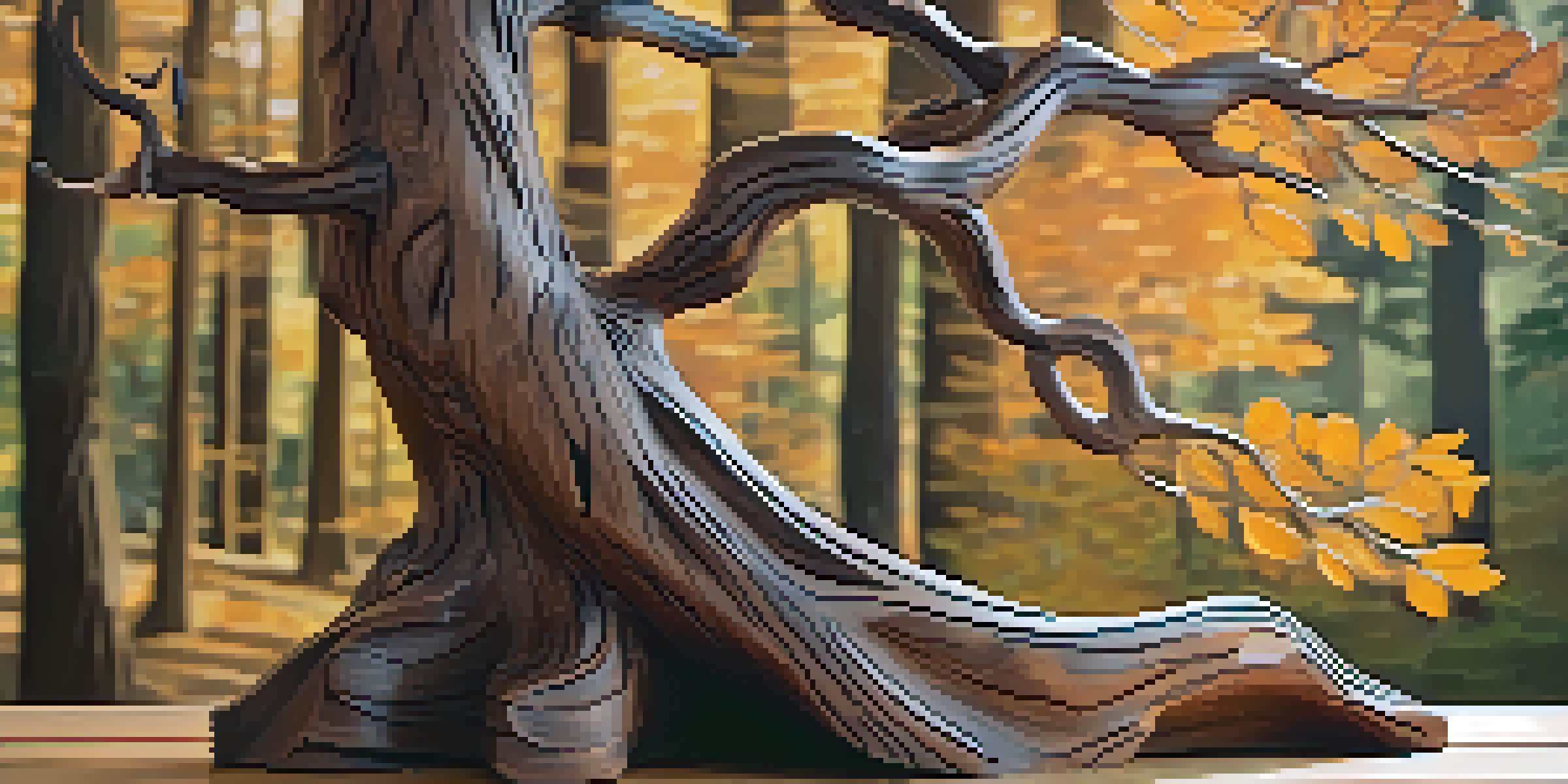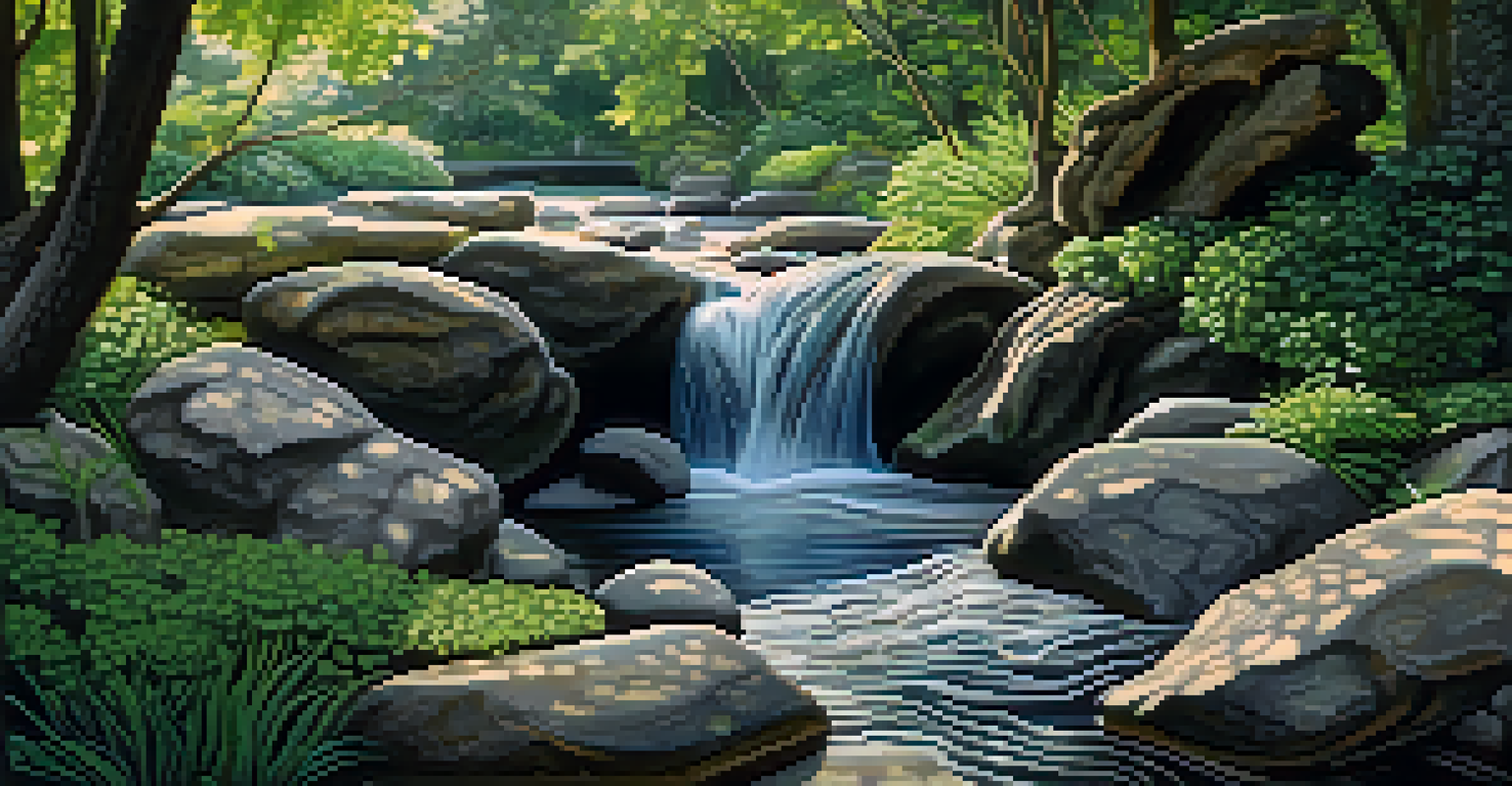Nature-Inspired Carving: Celebrating Our Planet's Beauty

The Art of Nature-Inspired Carving: An Overview
Nature-inspired carving is a beautiful art form that draws from the natural world. Artists use materials like wood, stone, and bone to create intricate designs that reflect elements of nature. This practice not only showcases craftsmanship but also promotes a deeper appreciation for the environment.
In every walk with nature one receives far more than he seeks.
By infusing their work with organic shapes and textures, artists help to bridge the gap between art and nature. Each carving tells a story about the environment, whether it's a flowing river, a majestic mountain, or delicate flowers. This connection to nature serves as a reminder of the beauty and fragility of our planet.
As more people become aware of environmental issues, nature-inspired carving is gaining popularity. Artists are not just creating beautiful pieces; they are also advocating for sustainability and conservation through their work, reminding us to cherish the world around us.
Materials: Choosing the Right Elements for Carving
Selecting the right materials is crucial in nature-inspired carving. Many artists prefer sustainable sources, such as reclaimed wood or ethically sourced stone, to minimize their environmental impact. This choice not only benefits the planet but also adds a unique story to each piece.

For instance, a carving made from driftwood carries the essence of the ocean, while stone from a local quarry reflects the surrounding landscape. These materials allow artists to connect their work to specific places, enhancing the meaning behind their creations. The tactile quality of these natural elements also adds depth to the final artwork.
Nature as a Source of Inspiration
Artists draw endless creativity from observing and connecting with the natural world.
Incorporating various textures, colors, and grains from natural materials can evoke different emotions. A smooth, polished surface might suggest calmness, whereas rough, weathered textures could convey resilience. Understanding the characteristics of each material helps artists convey their intended message effectively.
Techniques: Carving Methods Inspired by Nature
Carving techniques can vary significantly, but many artists draw inspiration from natural forms. Traditional methods like whittling or chiseling allow for detailed work, while newer techniques, such as power carving, enable more intricate designs. The choice of technique often depends on the desired outcome and the material used.
The Earth does not belong to us: we belong to the Earth.
For example, power carving can quickly remove material and create dynamic shapes, ideal for representing flowing water or swirling winds. Conversely, hand-carving techniques lend themselves well to delicate designs, like leaves or flowers. Each method offers unique possibilities and challenges, inspiring artists to experiment and refine their skills.
Ultimately, the technique used can transform a simple piece of wood into a stunning representation of nature. By blending various methods and styles, artists can create one-of-a-kind sculptures that resonate deeply with viewers, celebrating the beauty of the natural world.
Nature as Inspiration: Finding Ideas in the Environment
Nature provides endless inspiration for artists, and many find ideas through direct observation. Taking walks in forests, mountains, or along the beach can spark ideas for shapes, patterns, and textures to incorporate into their work. The more time spent in nature, the more artists can absorb its beauty and intricacies.
Additionally, photography and sketches can serve as helpful references. Capturing moments in nature allows artists to study the details and nuances of their subjects, leading to more accurate and expressive carvings. These references can be particularly valuable when working on complex designs.
Sustainability is Key in Art
Using eco-friendly materials and practices is essential for artists committed to environmental conservation.
Artists might also draw inspiration from cultural symbols and stories tied to nature. Many cultures have rich traditions that honor the environment, using animals or plants as motifs in their art. By blending these influences with their own experiences, artists can create pieces that resonate on multiple levels.
The Symbolism of Nature in Carving
Nature-inspired carvings often carry significant symbolism. Different elements of nature, such as trees, animals, and landscapes, can represent various themes and emotions. For instance, a tree might symbolize growth and strength, while a flowing river may evoke feelings of tranquility and change.
This symbolism adds layers of meaning to the artwork, inviting viewers to reflect on their own connections to nature. When people see these carvings, they may be reminded of their personal experiences in the natural world, creating a deeper engagement with the piece. This emotional connection can foster a greater appreciation for both the art and the environment.
Moreover, artists often use these symbols as a way to advocate for environmental awareness. A carving that highlights endangered species or the beauty of untouched landscapes can serve as a powerful reminder of what we stand to lose if we don't take action to protect our planet.
Sustainability in Nature-Inspired Carving Practices
Sustainability is a vital consideration in nature-inspired carving. As awareness about environmental issues grows, many artists are committed to using eco-friendly materials and practices. This commitment not only supports the planet but also resonates with audiences who value sustainability.
For instance, some artists opt for reclaimed wood, which not only reduces waste but also adds character to their work. Others may choose to use non-toxic finishes and adhesives, ensuring that their pieces are safe for the environment. This mindful approach to materials enhances the overall message of their art.
Symbolism Enhances Emotional Depth
Nature-inspired carvings often carry significant symbolism, inviting personal reflection and deeper connections.
Additionally, artists can engage in advocacy by participating in conservation efforts or donating a portion of their profits to environmental causes. By aligning their practices with their values, they inspire others to consider the impact of their own choices on the planet.
The Future of Nature-Inspired Carving
As the world evolves, so too does the art of nature-inspired carving. Artists are continually finding new ways to express their love for the environment, incorporating technology and innovative techniques into their work. This evolution keeps the art form fresh and relevant, attracting new audiences and enthusiasts.
Emerging trends include the use of digital tools for design and planning, allowing artists to visualize their creations before they begin carving. This technology can enhance precision and creativity, opening up exciting possibilities for intricate and imaginative designs. Additionally, social media platforms enable artists to share their work widely, fostering a community of nature lovers and fellow creators.

Ultimately, the future of nature-inspired carving lies in its ability to adapt and resonate with contemporary issues. By continuing to celebrate the beauty of our planet while promoting sustainability and awareness, artists can inspire others to appreciate and protect the world around us.